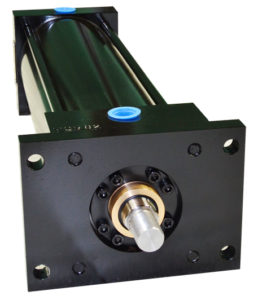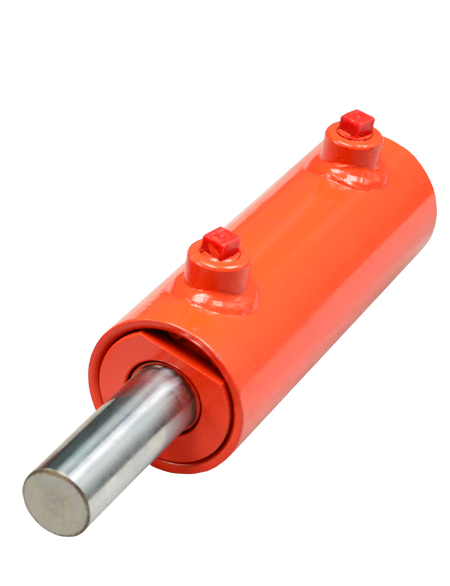Although both types of cylinders are used in fluid power systems, the end caps used to hold the cylinder together make the difference. Welded cylinders are designed with each end cap welded to the barrel. Mounts and other fittings will also be welded to a cap. Static seals are used to seal the head or gland of a welded cylinder. These designs are permanent.

Tie-rod cylinders. Image courtesy of Yates Industries
Tie-rod cylinders are held together by four or more threaded tie bolts that run the length of the entire cylinder tube. These bolts hold the baseplate and head together. Tie-rod cylinders are more common in the U.S. They usually feature static seals to prevent leakage between the barrel and end-cap interface.

Welded cylinders. Image courtesy of Yates Industries
Welded cylinders tend to be more complex but offer several advantages. They are typically more compact and usually can withstand higher pressures, often greater than 5,000 psi, so are often used on mobile machinery where space is at a premium. They also are more durable, so thus are used in harsh environments where longer lifecycles are required, such as hydraulic presses, steel mills and offshore settings. These designs are also more easily customizable for each application. However, they are generally more difficult to repair.
Tie-rod cylinders are usually a bulkier design but are more often offered as standard series with short delivery times, so are more readily available. High-strength threaded steel rods are used, so most cylinders of this design are rated for no higher than 3,000 psi. These designs are most often used in plastics or machine tools for industrial use.
Tie-rod cylinders are typically built to NFPA standards so can be easily interchanged. They also offer the advantage of being easily disassembled and replaced in the field by using a standard wrench.
Filed Under: Cylinders & Actuators, Mobile Hydraulic Tips